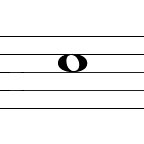

It wasn’t until Louis Armstrong did an arrangement of this, that it became a popular song. Who was the first singer to sing strophic pop? Am I understanding “strophic” to mean that the verses are repeating musical bits with no chorus/refrain? I know they are older as well, but Johnny Cash and Bob Dylan had a number of strophic form songs: Much of the Early Rock and Roll songbook was Strophic form. Who are some strophic rock and roll singers? In Strophic Song Form, the melody is repeated for each of the verses. Verses are usually built of eight, twelve, sixteen, or twenty-four bars, but a verse can be any length, whatever is needed to accommodate the specific lyrics of a song. Their popularity will no doubt continue for a long time.

Strophic songs are easy to learn and remember. It has even been adopted by popular music. Most folk music is strophic, many hymns are strophic, and concert composers use the form as well. Which is the best example of strophic music? You will commonly see the song form in country and folk music, as well as in ballads, Christmas carols, and religious hymns. It is commonly referred to as the AAA or one-part form. The strophic song form is primarily a song structure used to tell a story. Examples include the de capo aria “The trumpet shall sound” from Handel’s Messiah, Chopin’s Prelude in D-Flat Major (Op. Ternary form, sometimes called song form, is a three-part musical form where the first section (A) is repeated after the second section (B) ends. Songs that repeat the same basic multi-phrase unit throughout are in strophic form (sometimes abbreviated AAA, because the same basic material, A, is repeated), and the basic unit that is repeated is called a strophe. Simply defined, a strophic song is a type of song that has the same melody across each stanza, or strophe, but different lyrics for each stanza.

The strophic song form is a simple form that has been around for centuries. Just write a great tune and you’re all set! Lesson Summary Most composers have dabbled with the strophic form because it is so easy to use.

He also composed strophic choral works, most notably the motet ‘Ach, arme Welt’. This was a little unusual – there were other, more popular aria forms.And the German Romantic Period composer Johannes Brahms used the strophic form for nearly half of his art songs. In these cantatas, Buxtehude wrote twelve strophic arias for solo voice. The German Baroque Period composer Dietrich Buxtehude composed cantatas for the Lutheran worship service. The strophic song form has been heard in the concert hall and in churches throughout the centuries. Some popular examples include Simon and Garfunkel’s ‘Bridge Over Troubled Water’ and Bob Dylan’s ‘Blowin’ in the Wind’. The strophic form has been used in pop and rock music as well, although it’s not as common as it once was. After each of the five verses, a refrain beginning with the line ‘I surrender all’ is repeated to the same music.Many folk songs also use the strophic form.Ĭhildren’s songs like ‘Old MacDonald Had a Farm’ use a strophic form because the repetition makes the songs easy to learn. And ‘I Surrender All’ is a hymn that uses a refrain with the strophic form. The hymn ‘Amazing Grace’ is a strophic hymn the same music is sung for each of the seven verses of the poem. This most frequently occurs at the end of the song, but refrains may be used at the beginning or in the middle of the song as well.Common examples of the strophic form include hymns and folk songs. In the refrain, the same text is sung to the same melody for each repetition. The song may include a chorus or a refrain. A strophic song uses the same melody repeated over and over, with different text for each repetition. One of the most simple is the strophic form. There are dozens of forms with many variations. Most songs have a form, which is just the manner in which the different parts of the tune are arranged. * All Partners were chosen among 50+ writing services by our Customer Satisfaction Team


 0 kommentar(er)
0 kommentar(er)
